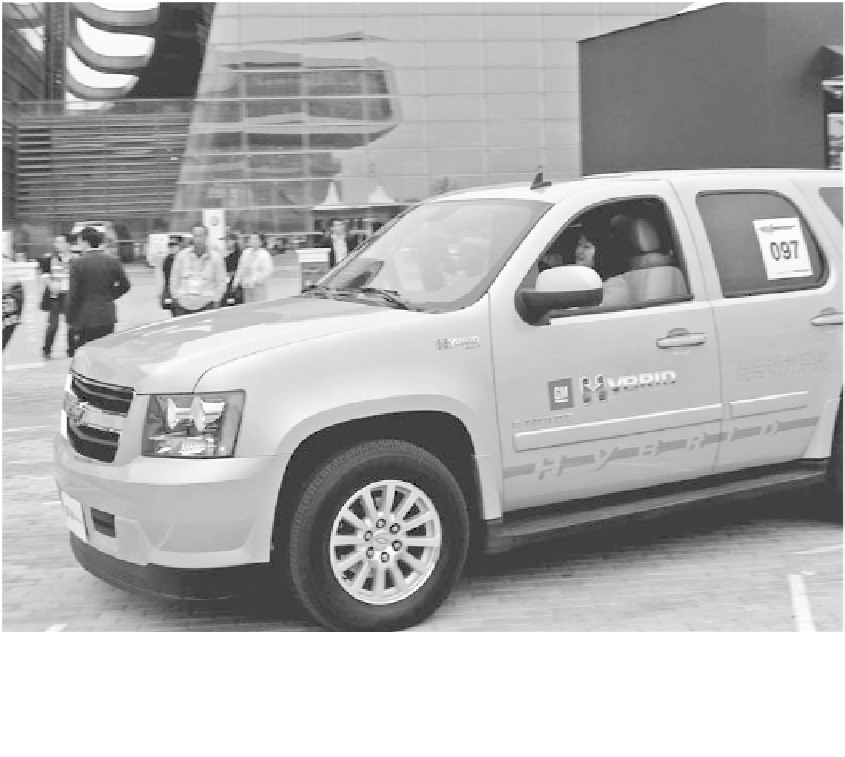Environmental Engineering Reference
In-Depth Information
transport emissions, from 0.22 tonnes/person in 2005 to 1.98 tonnes/person in 2030. Car travel
rises from 11 per cent to 85 per cent of all distance travelled, bus declines from 16 per cent
to 3 per cent, and NMT declines from 48 per cent to 3 per cent (2005-2030). Car emissions
are assumed to reach 139 gCO2/km by 2030, relative to 178 gCO2/km in 2005. This means
that emissions per km driven are 22 per cent less in the future projections, but this reduction
is outweighed by the huge increase in car travel. This scenario is of course very sensitive to
assumptions, hence a lower motorisation rate, growth in distance travelled or improved vehicle
efficiency would reduce the growth in emissions significantly.
A parallel can be made to the experience of Beijing, demonstrating what might happen
under this type of high motorisation future. Beijing has undergone a massive transformation
in urban transport, in supply and demand terms, in under 20 years. Short trips by bicycle and
foot historically dominated mode share, but car ownership has recently become extremely
attractive to the middle class, in terms of status, image and utility, as lifestyles are becoming
orientated around car use. Motor vehicle growth is well over 10 per cent per annum, and even
higher at 15 per cent for private cars. Car ownership in Beijing exceeded 4 million (2009),
an increase of one million in just 31 months. Ownership is growing by half a million a year,
which is more than 10,000 a week (
China Daily
, 2010). Road capacity has been massively
Figure 6.16
Dodge Hybrid. Though there are some low-emission vehicles emerging in the Chinese market,
availability is certainly not widespread. The huge growth in vehicle numbers, distance travelled
and vehicle sizes means that transport CO2 emissions are rising rapidly.
Source
: Low CVP.


